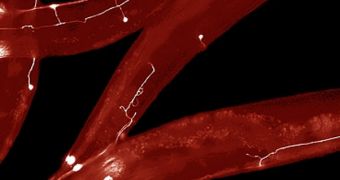Using an innovative research method, a group of scientists from the Massachusetts Institute of Technology (MIT) was able to speed up the research process on how to regenerate nerve cells.
Around the world, research groups are working on developing methods of boosting the growth of neurons that have been affected by strokes, Alzheimer’s, or accidents.
This line of work has been somewhat successful, in the sense that several approaches of promoting the regeneration of neurons show promise in lab tests conducted in petri dishes.
But the success rate drops dramatically when experts want to move their experiments from cultures to live animals. But testing the methods on live animals is critical for human clinical trials.
One of the reasons why it's so hard to do this is is because the process of identifying chemicals that work in animals is very time-consuming and expensive to carry out.
What the MIT team did was develop a new microchip technology that allows them to rapidly test the therapeutic potential that newly-discovered molecules have.
The team uses worms called C. elegans for the job, because these creatures are often considered one of the best models for the human nervous system.
By using the new technique, scientists can perform laser surgery on the worms, deliver the drugs very fast, and the survey the animal to learn whether neural regeneration appears or not.
In charge of the research team is MIT associate professor Mehmet Fatih Yanik. “Our technology helps researchers rapidly identify promising chemicals that can then be tested in mammals and perhaps even in humans,” he says.
Though only developed a short time ago, the new technique has already been used to identify a class of neuronal regenerators that holds great promise for aiding nerve cells' recovery.
The team published a paper detailing the findings in the October 11 online issue of the esteemed journal Proceedings of the National Academy of Sciences (PNAS).
“Using ‘classical’ handling techniques you can cut and assay at most 100 animals per day. Yanik's automated system seems like it could increase throughput by at least 10-fold over that number,” says Michael Bastiani.
The expert is based at the University of Utah, and was not a part of the research. He says that such a high degree of automation has the potential to speed up research in the field several times over.
This line of research could have direct applications in people suffering from brain or spinal cord injuries, or from diseases such as Alzheimer’s, Parkinson’s and ALS.

 14 DAY TRIAL //
14 DAY TRIAL //